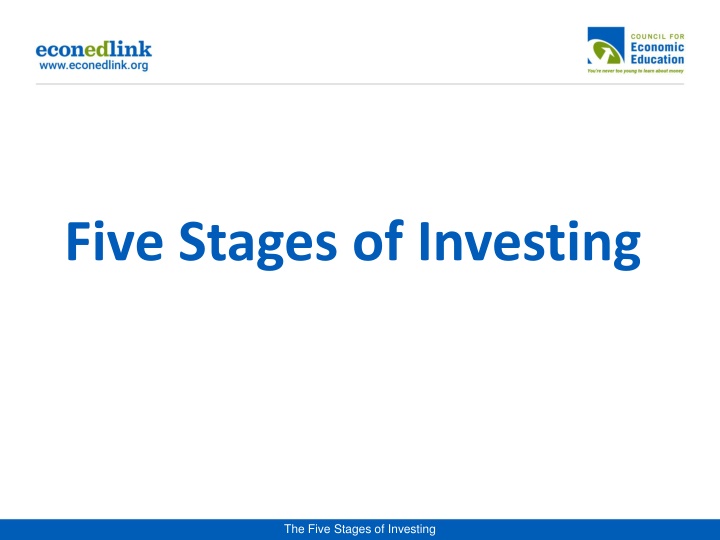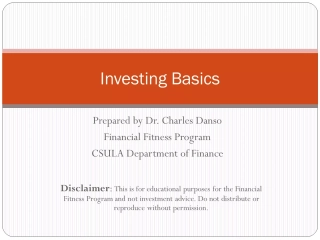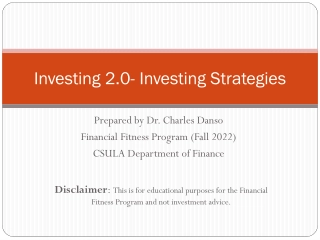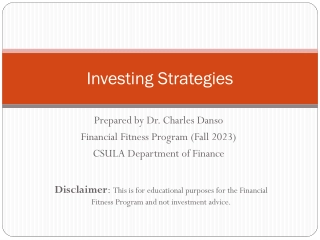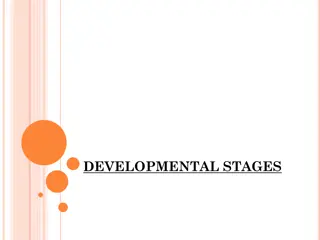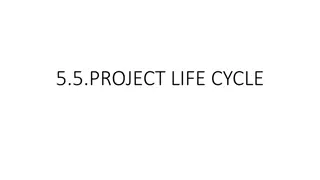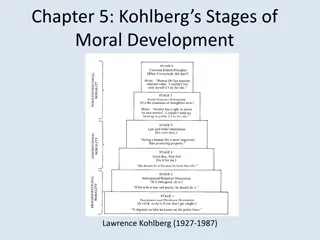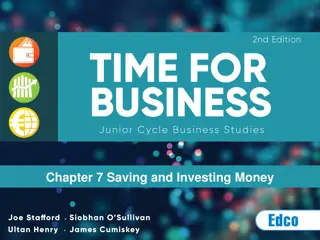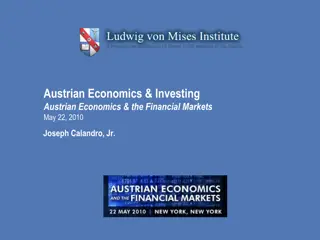The Five Stages of Investing Explained
In the journey of investing, there are five stages to progress through. The stages involve understanding the types of investments, assessing risk levels, setting up financial accounts, and gradually moving towards higher-risk investments. Starting with a put-and-take account for daily expenses, transitioning to low-risk investments, and eventually considering higher-risk options as financial stability grows. Early planning and consistent financial management play crucial roles in successful investing.
Download Presentation

Please find below an Image/Link to download the presentation.
The content on the website is provided AS IS for your information and personal use only. It may not be sold, licensed, or shared on other websites without obtaining consent from the author.If you encounter any issues during the download, it is possible that the publisher has removed the file from their server.
You are allowed to download the files provided on this website for personal or commercial use, subject to the condition that they are used lawfully. All files are the property of their respective owners.
The content on the website is provided AS IS for your information and personal use only. It may not be sold, licensed, or shared on other websites without obtaining consent from the author.
E N D
Presentation Transcript
Five Stages of Investing The Five Stages of Investing
Table 1 Types of Investments Cash Stock Mutual Funds Stocks Treasury Bills Options Penny-stocks Futures Real Estate And Property Management Checking Accounts Government Bonds Money Market Accounts/Funds Savings Accounts Junk Bonds Collectibles Bond Mutual Funds Certificates of Deposit (CDs) The Five Stages of Investing
Table 2 Category Typical Types of Investments lowest risk, spendable cash, checking accounts low risk, save base savings accounts, money market accounts/funds, CDs low-middle risk treasury bills, government bonds, mutual funds based on bonds high-middle risk stocks, mutual funds based on stocks, real estate and property management highest risk options, futures, collectibles, penny-stocks, junk bonds The Five Stages of Investing
Step 1 of the 5 Stages: Put-and-take account This is the first type of financial instrument you should establish when you begin earning income. This account is for meeting your daily money needs rather than for saving and investing. For most people, the put-and-take account is a checking account. A checking account is the money that you're going to need immediately (or soon) plus a little extra for emergencies. You can take money out of this account by writing checks, for example, for car payments or clothes. Experts recommend that you set aside three to six months of net pay in your checking account, but always leave a safe cushion above the minimum requirements set by the bank for the account. You want to avoid payments to the bank for dropping below the minimum required for the account. So if you're making $50 a week working at the movie theater, your goal for the put-and-take account should be $600 to $1,200. This first stage is very low-risk because you don't want to gamble with the money you're counting on to pay the electric bill! The Five Stages of Investing
Step 2 of the 5 Stages: Beginning to Invest After you're established a stable put-and-take account (meaning that you're NOT running out of money in your checking account each pay period), you can move on to considering beginning investments. These first investments should be low-risk instruments, for example, savings accounts, certificates of deposit, money market funds and perhaps treasury bills. You probably will earn a relatively low rate of return on these investments, but giving up the potential of higher returns for more security is important at this stage. Most people begin this stage in their twenties or thirties, when their budgets and spending are stable and they begin to have excess cash. Getting an early start is important because your investment will have more time to earn returns for you! That's why it's important to get your put-and-take account established as soon as you can. If you are a seventeen year-old and have your put-and-take account under control, you can get a head start on the next stages and a head start on other investors! The Five Stages of Investing
Step 3 of the 5 Stages: Systematic Investing When you have established your beginning investments, you can move on to investing on a REGULAR and PLANNED basis. For most people, this is a commitment to invest a predetermined dollar amount every pay period, usually in bonds, stocks, mutual funds, or annuities, the middle risk categories. Goals for this stage are long-range; you're going to see the best return from this kind of investment if you continue with it for over twenty years. Typically, people enter this stage in their thirties and forties, when their earning potential is the highest. Here again, starting early is important. The seventeen year-old who has a stable put- and-take account and begins investing early might be ready to jump into systematic investing in his or her twenties. The financial investments are a combination of bonds, fixed income investments, and stocks. The key here is carrying out a consistent plan. The Five Stages of Investing
Step 4 of the 5 Stages: Strategic Investing The fourth stage is for investors who have set up a stable put-and-take account, built safe beginning investments, and established a systematic investing plan. When you have assets above and beyond those commitments, you can begin strategic investing, which is managing your portfolio (your collection of assets) with a goal of balancing out losses and gains in different investment instruments. The key here is diversification: making sure you're not keeping all your eggs in one basket. Since stocks and bonds often respond in opposite ways to market conditions, many people invest in both to balance losses in one with gains in the other. Goals in this stage are medium-term: five to ten years. The Five Stages of Investing
Step 5 of the 5 Stages: Speculative Investing The fifth and final step is speculative investing, for example, investing in penny stocks, junk bonds, or collectibles. Speculative investing involves high levels of risk, but it also has the potential to yield high returns. This type of investing should only be done by people who can afford to lose the investment amount. Many people never do engage in speculative investment, preferring to avoid the heightened level of risk that it involves. The Five Stages of Investing
Put Your Knowledge to Work! You are now an expert financial adviser. The following people have e-mailed you asking for advice on their next step in investing. They're at different stages of saving and investing, and they don't know where to go from here. Using what you've just learned about the stages of saving and investing, give them sound financial advice. The Five Stages of Investing
My friends parents should invest their small inheritance in; _______________________________________________ _______________________________________________ Because; _______________________________________________ ______________________________________________. The Five Stages of Investing
